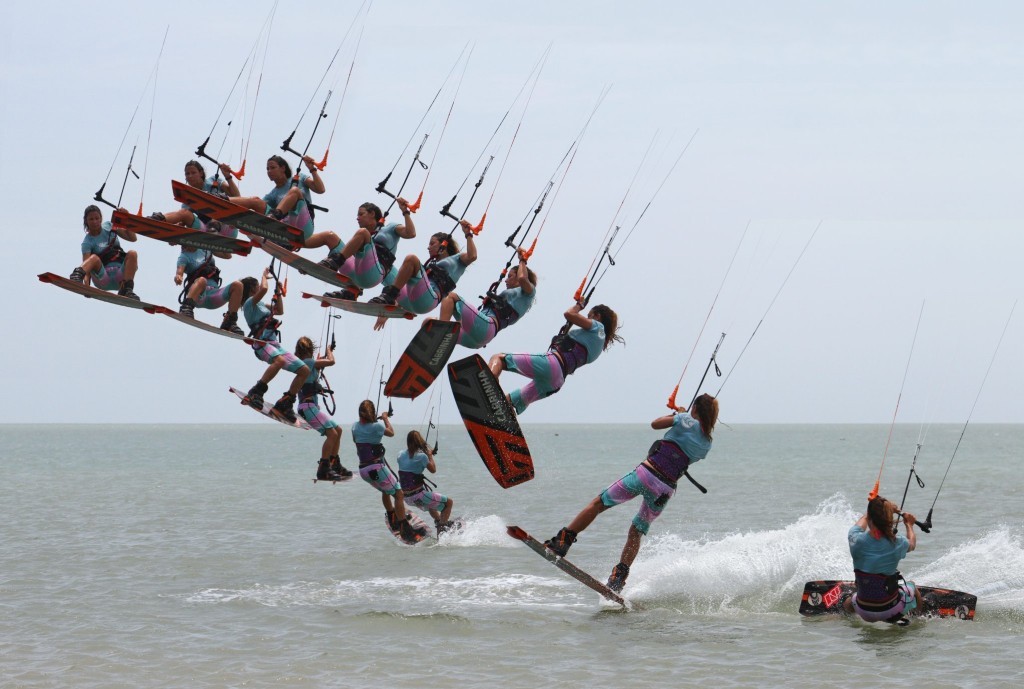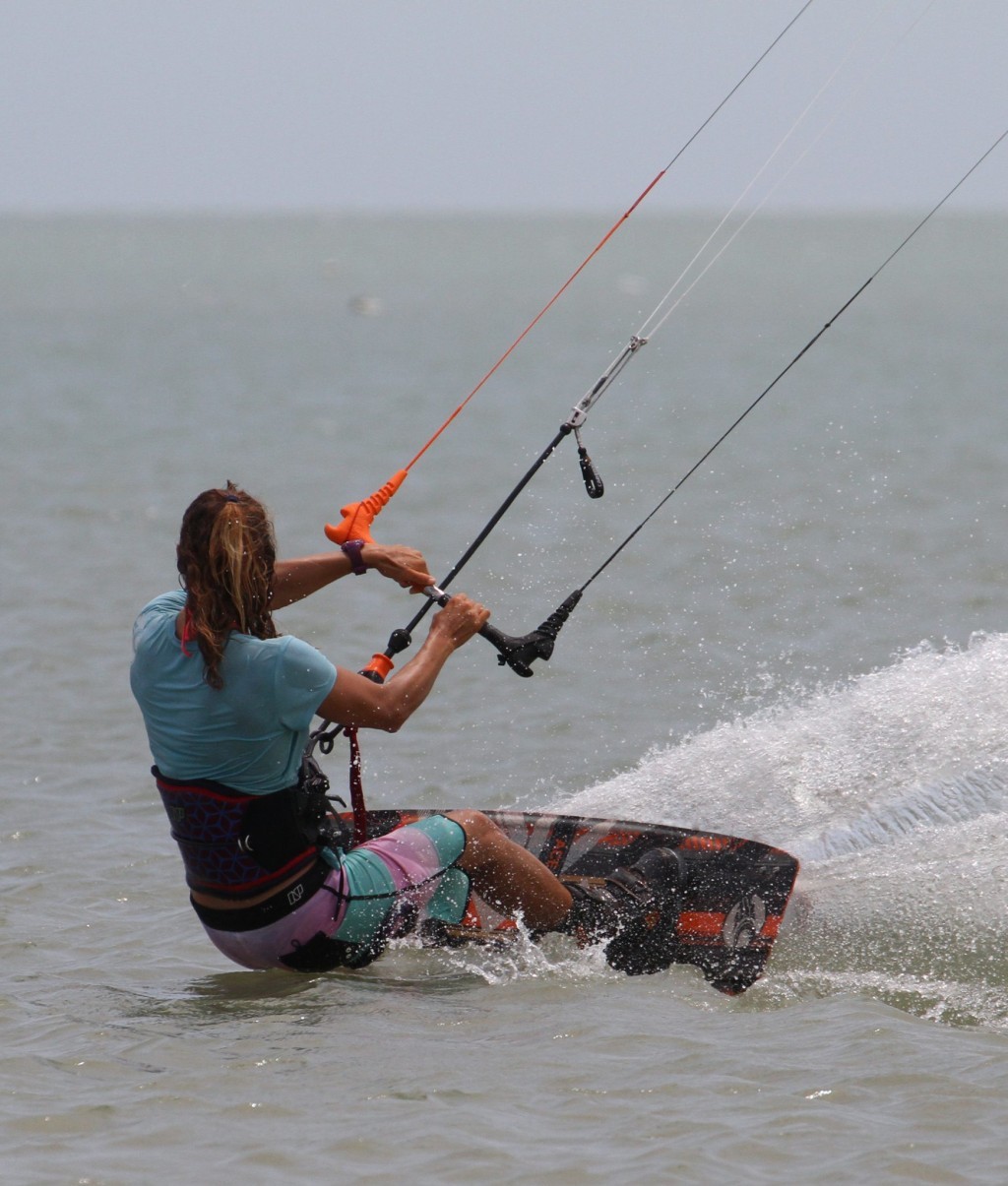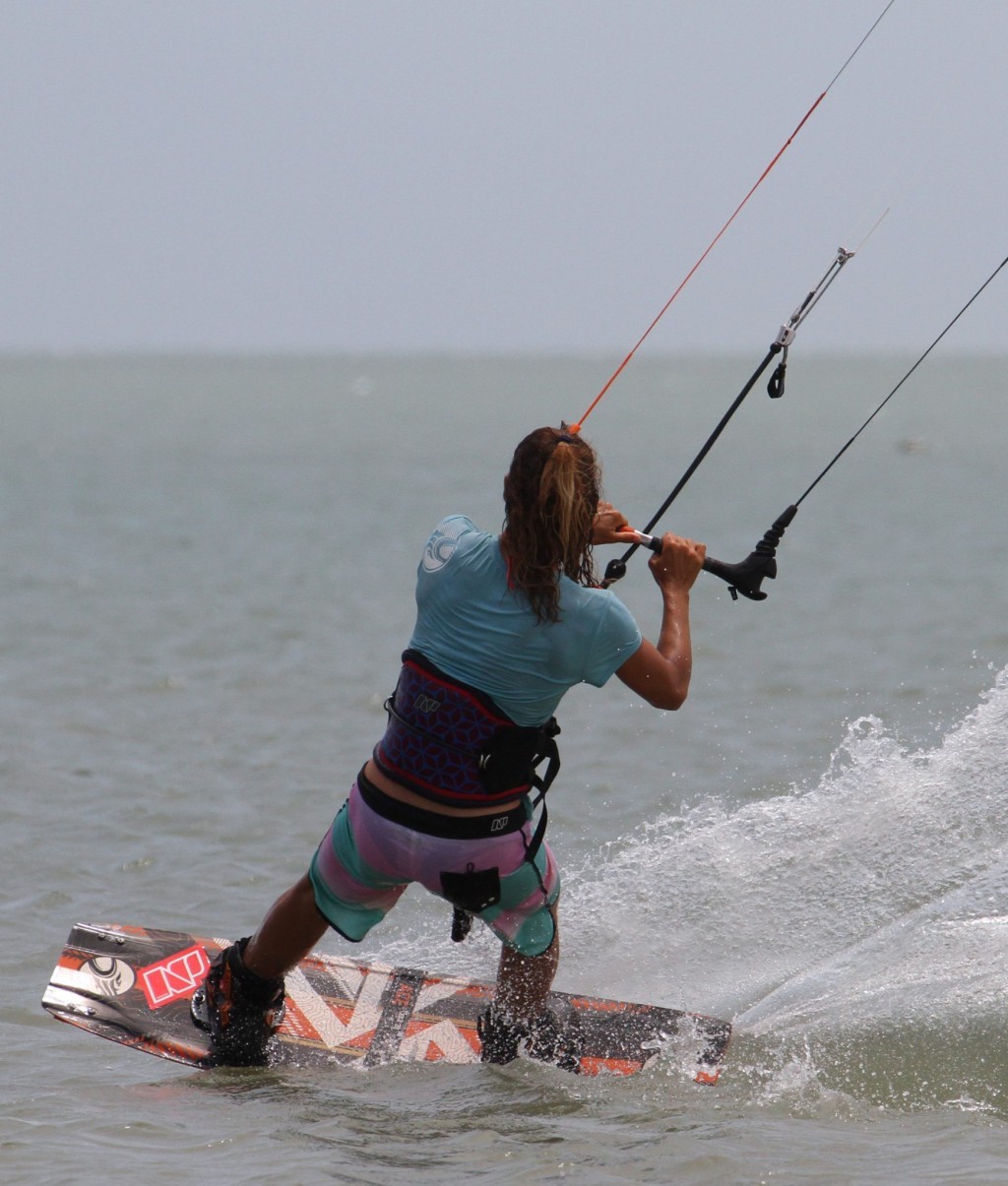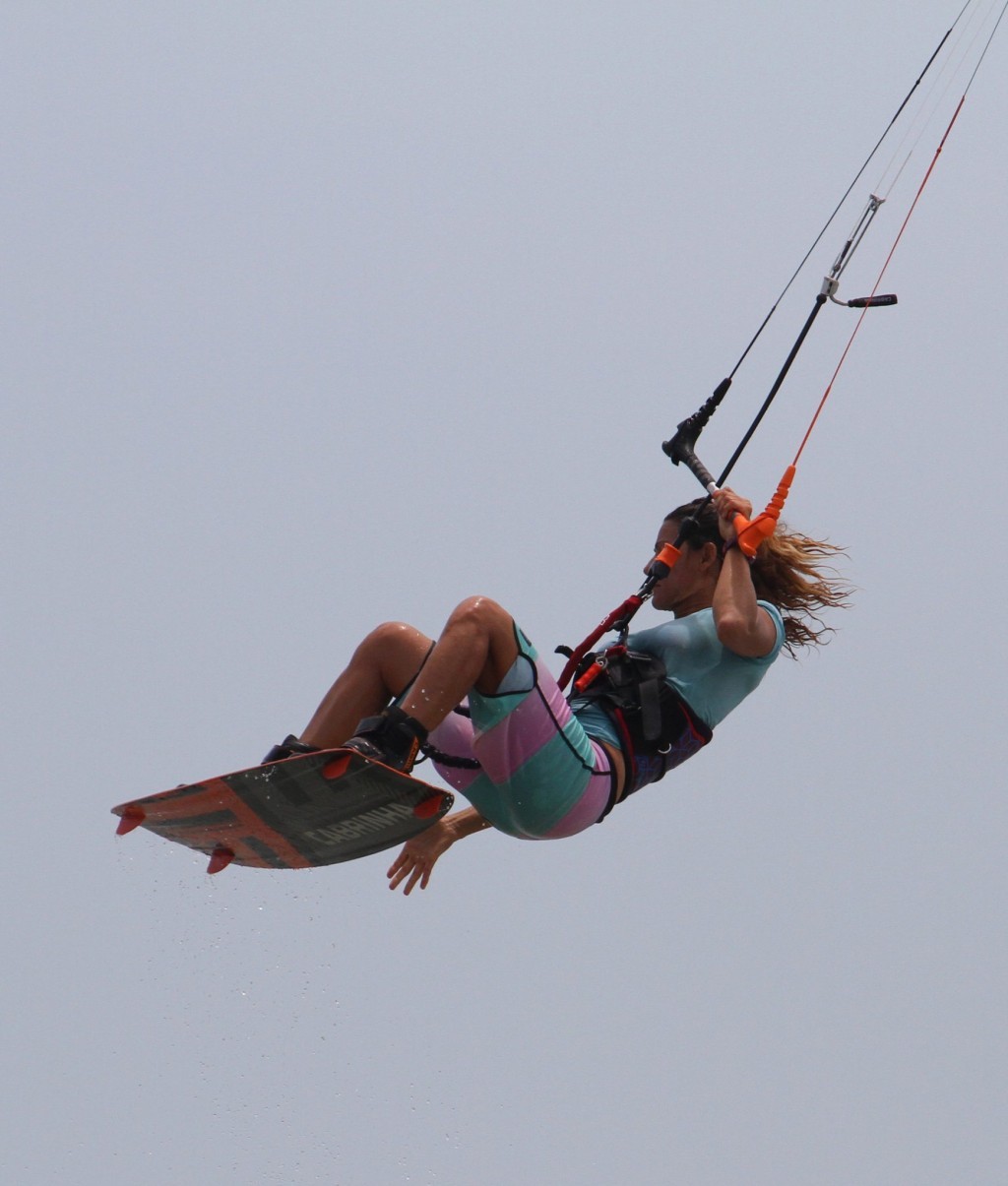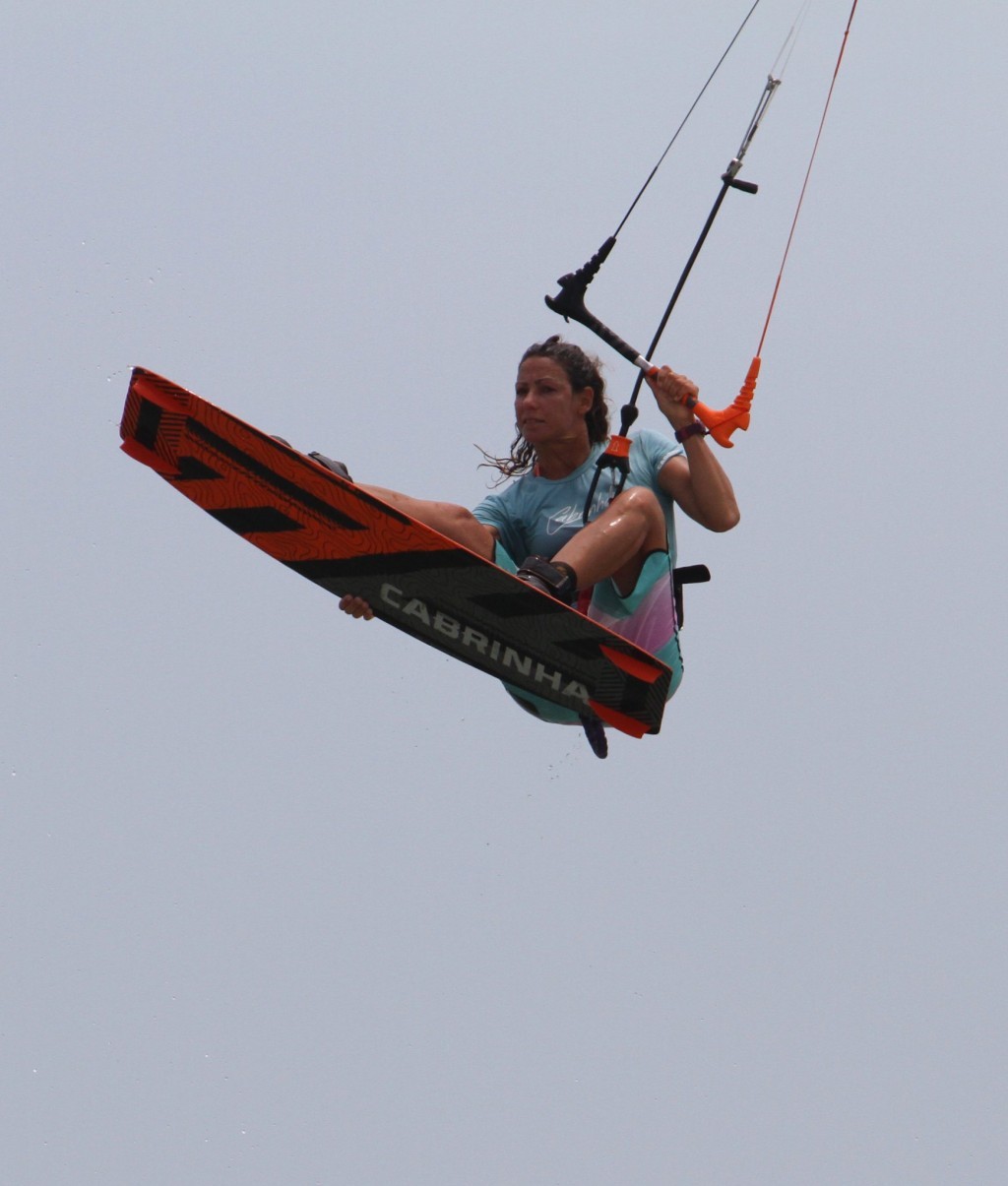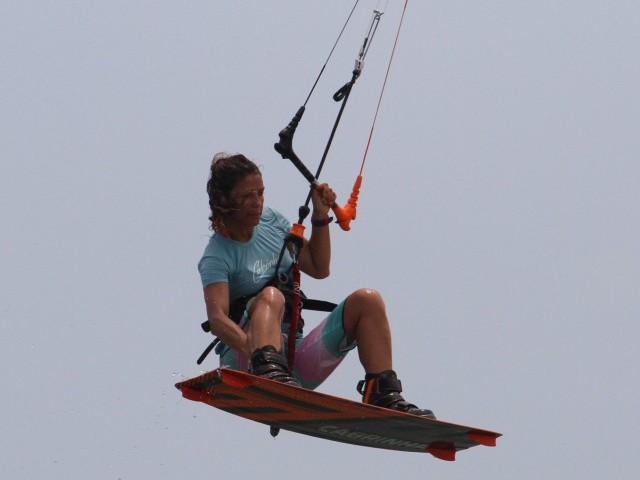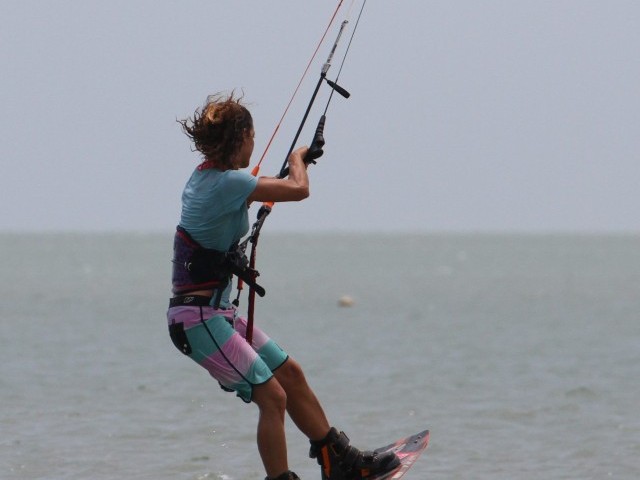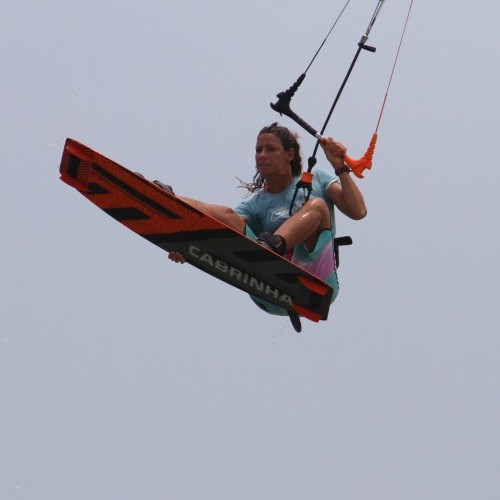
Back Loop Stalefish Grab
Technique / Intermediate
Introduction
If ever there was a perfect embellishment to spice up a back loop/roll this must be it. Like love and marriage these two combine for the sweetest company. A lot of you no doubt love to bone out a straight air or a front loop, and now this really is the reverse, a boned out back loop, in which you’ll be boning the board back rather than forward, while grabbing with your back hand. To be clear the stalefish grab is on the heel side edge, between your heels with your back hand. There are however no arms through the legs or other such contortions. As you’re probably aware by now we like this one a lot, and it sure makes a welcome change to the tail or indy, so it's really rather bodacious.
We will assume that if you’re trying this, you can already happily land a sent back roll. And it would be preferable to be a grabber of sorts, so that taking your back hand off the bar while performing said rotation won’t be the scariest thing ever.
Whatever else we say, the crux to this move is slowing your rotation down to an almost stall. This will give you both the time and the confidence to add the grab and bone it out with the utmost of style. With that in mind here’s how we’ll do it.
The Jump Pic A.
Your first aim is to get enough height and hang time to allow you to add a solid grab into the mix. It’s very tempting to only send the kite gently when learning something new. The problem is then that you don’t get what you expect from your jump, and when grabbing the kite will not go as far back past 12 o’clock, which will affect your balance and position in the air while the kite moves prematurely forwards. With your kite at either 11 or 1 o’clock, you need to give it the beans. If you’re giving the kite the beans, you’ll need a strong edge to resist the power, which means getting plenty of board in the water and having a stiff back leg even though it’s slightly bent. In the pic, you can see that Karine has given the bar a positive send to move the kite, she’s on the sweet spot and has as much edge in the water as possible to resist against the kite. She’s looking forwards over her shoulder and her back leg, although bent is stiff.
The Slow Mo Rotation Pic B.
Your rotation speed can be controlled from the off so the way in which you initiate your back roll will directly lead to a happy or not so happy ending. You will need to carve the board gently into the wind as the kite lifts to generate a slow turn. However, you must not throw the rotation. The best bet here is to have a look at Karine. She has carved up into the wind just before take-off. However, she has only performed this with her edge. Her head is still looking forwards, her shoulders have not twisted to face upwind, and neither have her hips. This way she will turn, but slowly. Two other important points her. Before taking off, she has already levelled the bar to stop the kite going back any further, and her back leg is extending. This allows her to keep her weight relatively forward and therefore she can resist through her back leg and kick up off it. It’s always tempting to lean back and soften the back leg but this will send you spinning into a much faster rotation, and the kite will go bombing off behind you as you lean all your weight onto your back hand.
Stall and Prepare Pic C.
Once you’re in the air you need to set things in motion to get the grab, make sure you get float from the kite and guarantee that you’re rotating slowly. Fortunately, a couple of these will work together and make life a bit simpler. To grab the board on the heel side edge you need to bring it nearer, so bring your knees up towards your chest. If you look down towards the back half of your board, you can spot where you want to grab, release your back hand and start stretching towards the stalefish spot, in-between your heels. By looking back, this will also keep your rotation slow (assuming it is already slow). And to make sure the you keep floating you need to redirect the kite towards 12 o’clock with your front hand. Here you can see Karine following these instructions to the letter. Her bar is in and steering the kite forward, she’s looking for her grab spot, and she’s lifting her board towards her while reaching down with her back hand.
The Stalefish Pic D.
Here’s your absolute goal. Reaching the grab with your back hand, arm behind your leg and then stretching your back leg out to really bone it. This moment is almost a freeze frame. With your head and body still facing back you’ll have all but killed your rotation, so should hopefully be in suspended animation as you add as much style as possible. While you’re grabbing and styling don’t forget the kite. Karine still has her bar in on the sweet spot, and she’s still redirecting the kite forwards. Makes for a sweet photo opportunity:)
Finish the Rotation Pic E.
Once you’re content with the grab and have held it long enough for the shutter to release and claim your moment of glory, it’s time to finish the move. Seeing as how you will have pretty much stalled your rotation while grabbing, you must now release your grab so that you can get your legs and board moving again and give yourself some chance of landing this. As Karine releases her grab she brings her back knee forward again so that she is in a normal balanced flying position. She’s still moving the kite forwards, and this will help to pull her around the rest of the rotation. All Karine needs to do now is look where she is going, and she’ll come around nicely.
Claim It Pic F.
Time to stomp the landing and get celebrating. All the usual culprits are relevant here. Get the board pointing downwind, try and get both hands back on the bar and kiss down tail first. The only potential add-on is the severity with which you may need to dive the kite. This is because you will have steered it quite far forwards while using it to help you come around your rotation. It is therefore possible that the kite will be quite forward at the edge of the window. To get enough power to pull you out of it, you’ll need to give it one mighty tug and dive.
Top Tips
This is definitely a move to break down into achievable chunks. First off concentrate on your take off so that you can get a nice slow-mo back roll. Remember that this comes from a gentle carve and a stiff back leg so that you can kick up and around.
Once that’s in the bag it’s time to go for the grab. At first, aim to grab just inside your back heel, this way it won’t feel a million miles from a tale grab and the head will compute it quicker.
Next, it’ll be moving the grab more central between your heels and then finally adding the extension to the back leg to bone the board out behind you as you rotate.
Check out Karine’s full move in the sequence and videos.
Common Problems
Spinning too quickly! If this is happening to you, make sure you use the back leg more to pop up into the trick. Think of moving up and forwards as kick off, rather than rolling backwards. This is one reason we like to call it a back loop, as you are looping, doing a 360° rotation, while still travelling forwards, you don’t want to be rolling over backwards.
If you’re rotating OK but are struggling with time to grab and bone, the chances are that you’re not sending the kite back enough, so it’s pulling you forwards and out of your rotation too early. Make sure you give it a decent send, so that it goes back past 12 o’clock.
Keystones
- Good send and stiff back leg
- Use only the edge of board to initiate rotation
- Kick up into a slow rotation.
- Knees up, grab and bone.
- Release grab and dive kite hard to come around
This technique article was in Issue 64 of IKSURFMAG.
Related
By Christian and Karine
Christian and Karine have been working together as a coaching team, running improver to advanced kitesurfing clinics since 2003.






